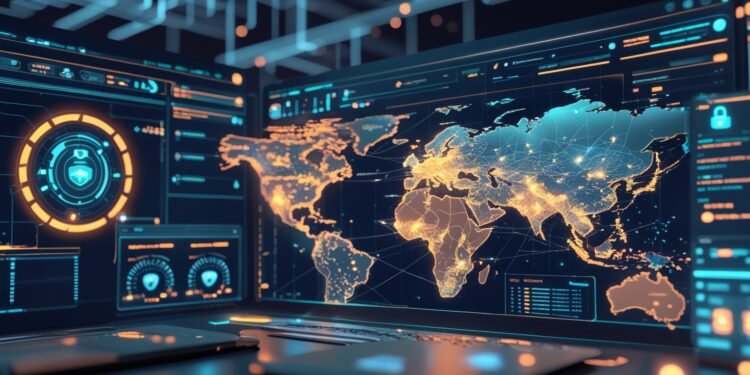By Marc Mawhirt | LevelAct.com
As the volume, velocity, and variety of cyber threats continue to escalate in 2025, traditional SIEM (Security Information and Event Management) systems are being pushed beyond their limits. Enter the era of cloud-native SIEM—an architectural shift that is redefining how enterprises detect, investigate, and respond to threats in real time.
These next-gen platforms aren’t just cloud-hosted—they’re cloud-architected from the ground up. Designed to scale elastically, integrate AI analytics, and provide visibility across hybrid and multicloud environments, cloud-native SIEMs like Microsoft Sentinel, Sumo Logic, and Chronicle Security are quickly becoming essential tools in the modern security stack.
What Is a Cloud-Native SIEM?
A cloud-native SIEM is a modernized version of traditional log management and threat detection systems. Unlike legacy SIEMs, which rely on rigid infrastructure and batch data ingestion, cloud-native platforms are designed for:
-
Real-time ingestion and analysis of security data
-
Elastic scalability to handle petabytes of log data
-
Tight integration with cloud workloads and services
-
Embedded AI/ML for behavioral analytics and anomaly detection
-
Automated response and orchestration via SOAR (Security Orchestration, Automation, and Response)
The key difference is not just where the SIEM runs, but how it operates and evolves—offering faster time-to-detect (TTD) and time-to-respond (TTR) without the overhead of legacy systems.
Why AI Is Supercharging Cloud-Native SIEM
The real game-changer in 2025 is AI augmentation. Today’s cloud-native SIEM platforms don’t just collect logs—they learn from them.
Machine learning models are now built directly into the analytics engine, enabling the SIEM to:
-
Detect subtle anomalies in user and entity behavior (UEBA)
-
Map tactics to the MITRE ATT&CK framework
-
Reduce false positives by contextualizing threat alerts
-
Prioritize alerts based on real-world risk scoring
For example, Microsoft Sentinel’s Fusion feature uses machine learning to correlate signals from different data sources (cloud, on-prem, identity, and endpoint) into high-confidence alerts—cutting noise and saving hours of analyst time.
Hybrid and Multi-Cloud Visibility
In a world where workloads span AWS, Azure, Google Cloud, and private infrastructure, visibility is everything.
Cloud-native SIEMs can ingest data from multiple cloud sources, normalize logs, and present a unified security view. This enables:
-
Detection of lateral movement across cloud boundaries
-
Monitoring of API abuse and cloud misconfigurations
-
Compliance auditing across multicloud workloads
-
Centralized incident response workflows
Vendors like Chronicle Security and Elastic Security now provide connectors to nearly every major cloud and SaaS environment, enabling complete telemetry from Kubernetes clusters to serverless functions.
Automating Threat Response
Gone are the days of manually chasing alerts. Today’s platforms incorporate SOAR playbooks that can automatically:
-
Quarantine infected endpoints
-
Revoke compromised credentials
-
Launch threat-hunting investigations
-
Notify incident response teams through Slack, Teams, or PagerDuty
The tight coupling of SIEM and SOAR means organizations can move from detection to containment in seconds, not hours.
Key Benefits of Cloud-Native SIEM
| Benefit | Description |
|---|---|
| Elastic Scalability | Scales dynamically with data volume—no capacity planning needed |
| Faster Time to Detect | Real-time stream processing and anomaly detection |
| Lower TCO | No hardware or software maintenance, pay-as-you-go model |
| AI-Powered Analytics | Built-in ML for behavior-based threat detection |
| Global Threat Intelligence | Integrated feeds and threat sharing from leading vendors |
| Zero Trust Integration | Works with identity, endpoint, and network telemetry in a zero trust architecture |
Challenges to Watch
Despite the advances, there are still hurdles:
-
Data Privacy and Sovereignty: Sensitive log data crossing geographic boundaries raises compliance concerns.
-
Alert Fatigue: Even with AI, tuning is critical to avoid overwhelming SOC teams.
-
Integration Complexity: Merging cloud-native SIEM with legacy on-prem systems can be messy without solid planning.
The Road Ahead
Cloud-native SIEMs are evolving toward autonomous security operations centers (SOCs)—driven by AI agents that handle detection, triage, and initial remediation. As cybersecurity mesh architectures mature and the convergence of observability and security continues, these platforms will only grow in sophistication.
If your organization hasn’t started evaluating cloud-native SIEM, 2025 is the time to move. The old way is too slow, too noisy, and too brittle.


















